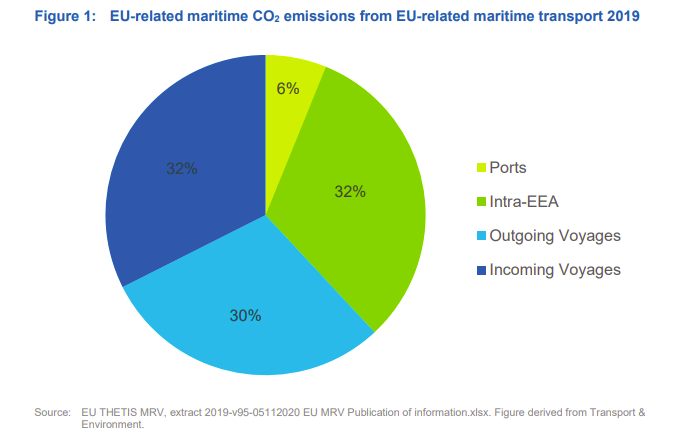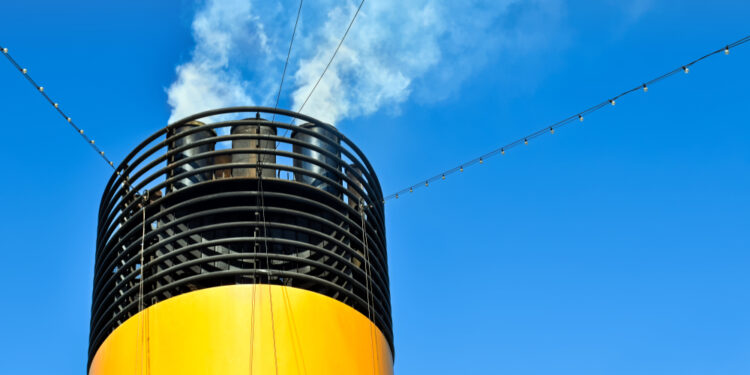The inclusion of shipping in the ETS would not pose any technical barrier to a global emissions reduction measure, but instead, it may accelerate IMO discussions, according to a new report by Oeko Institute along with European green group T&E.
It can be concluded that the inclusion of shipping in the EU ETS would not cause any technical barriers for the elaboration and implementation of GHG reduction policies at global level. On a political level, since the EU policy is likely to be implemented earlier than any similar MBM at global level, it may both accelerate discussions and agreements on the design of such a MBM at the IMO – as was the case with emission control areas or the IMO DCS,
…the report reads.
[smlsubform prepend=”GET THE SAFETY4SEA IN YOUR INBOX!” showname=false emailtxt=”” emailholder=”Enter your email address” showsubmit=true submittxt=”Submit” jsthanks=false thankyou=”Thank you for subscribing to our mailing list”]
The findings come amid a great debate after the EU officially proposed Wednesday the inclusion of shipping in EU Emissions Trade System to monitor emissions domestically, a move that faced opposition by several shipping parties noting that this could threaten the world’s unified decarbonization efforts.
Other than as an ideological revenue raising exercise, which will greatly upset the EU’s trading partners, it’s difficult to see what extending the EU ETS to shipping will achieve towards reducing CO2, particularly as the proposal only covers about 7.5% of shipping’s global emissions. This could seriously put back climate negotiations for the remaining 92.5% of shipping emissions,
…said Mr. Guy Platten, Secretary-General of ICS on Wednesday, adding to concerns raised by the IMO Secretary-General himself at the opening of the IMO’s MEPC 76 meeting in June, who alerted the shipping industry on the increasing risk of regional measures in the global ambition of reducing shipping emissions.
 As such, the report, focusing on the integration of maritime transport in the EU emissions trading system (ETS), looks through the various policy options on the table (the geographical scope, regulated entity, allocation method, use of revenues) as well as examining the compatibility of a shipping ETS with measures currently being discussed at the IMO.
As such, the report, focusing on the integration of maritime transport in the EU emissions trading system (ETS), looks through the various policy options on the table (the geographical scope, regulated entity, allocation method, use of revenues) as well as examining the compatibility of a shipping ETS with measures currently being discussed at the IMO.
In addition, the paper assessed how the inclusion of shipping in the EU ETS would interact with efforts at international level under the IMO to address these emissions and how the inclusion should be designed to both ensure environmental integrity and practical feasibility for the regulated entities. In IMO’s Initial GHG strategy, 20 short-, mid- and long-term candidate measures are listed for reducing GHG emissions.
The analysis shows that most of the candidates would not interfere or work complementarily with the inclusion of maritime shipping in the EU ETS. However, policies involving some form of carbon pricing or trading of certificates might induce some overlap:
- Establishing an International Maritime Research Board Fund, as suggested by ICS et al., would raise 2 US$/t of fuel to finance research and development towards GHG-reducing technologies, specifically post-fossil fuels. Although it is not considered as a market-based policy by the sponsors, it could either work as a road test for carbon pricing at international level (so that the rate could later be scaled up to levels which would ensure the decarbonization of the sector) or cause the delay of more stringent policies.
- Market-based policies have been mentioned in submissions to the latest MEPC meeting. However, more detailed discussions on the proposals, like a levy of 100 US$/tCO2, have been postponed.
If such a policy involved allowance trading as under the EU ETS, it would certainly overlap but mutual recognition and/or adjustments of the EU ETS to make it compatible with the IMO design should be basically feasible. If it were implemented as a flexibility mechanism for a goal-based approach with trading of certificates, these units may not be fungible with allowances under the EU ETS,
…the report concludes.





























































